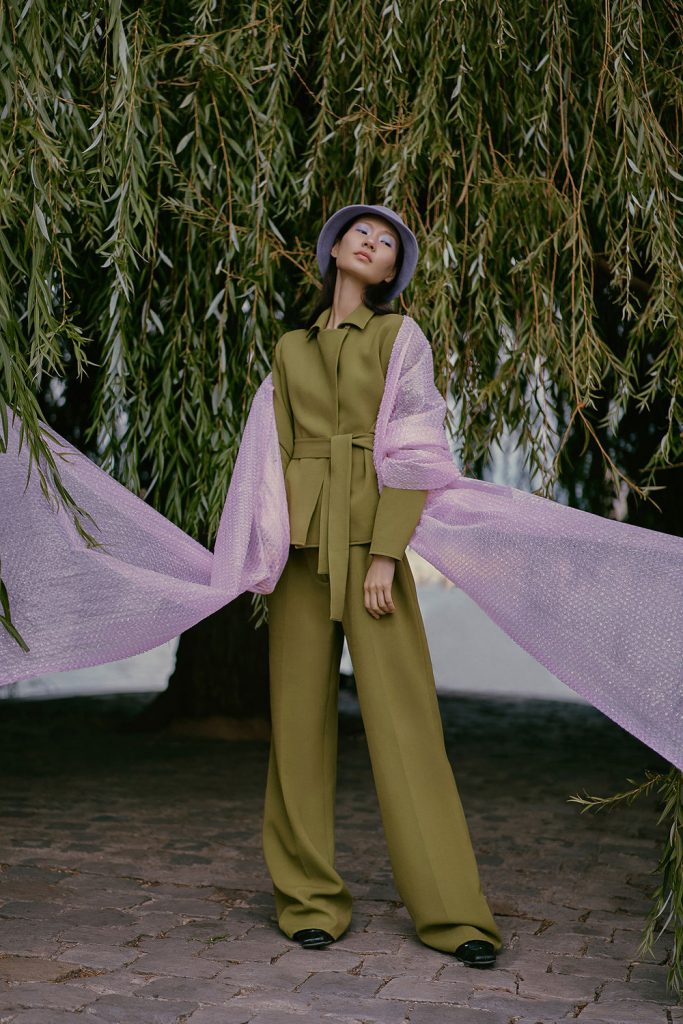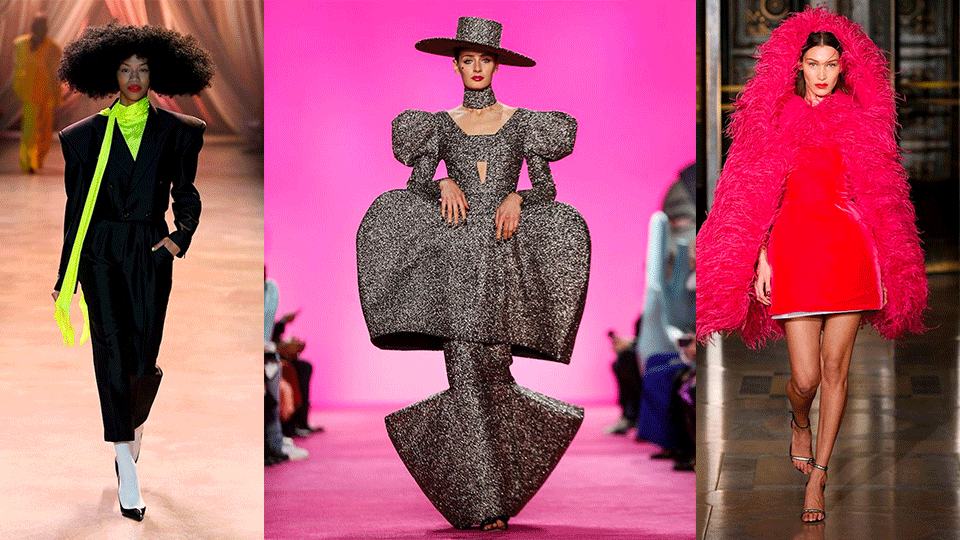- À New Wave to Fashion, À New Way of Living. Download Now on iOS Android Canada SS22
- hello@alahausse.ca
How Sustainable is Bamboo fabric?

Copenhagen: The Capital of Fashion Sustainability
August 11, 2021
Virtual Fashion Shows Are Making Luxury Accessible
August 11, 2021
Written by: Zeinab Magdi
In East Asia, bamboo was historically used for the production of paper, weapons, and household items. Bamboo fabrics only recently entered the Western commercial market in the early 2000s, however the concept has been around for hundreds of years. In 2001, Beijing University became the first institution to successfully convert bamboo into cloth. From 2004, the production of bamboo increased exponentially, as much as 5000 percent, becoming extremely common and popularized in the fashion industry. The market was able to provide bamboo clothing at affordable prices, and it’s silky, light, and breathable texture made it favourable among consumers. However, this led to brands cutting corners in order to rapidly produce this fabric in order to increase profit.
What is Bamboo Fabric made of?
Bamboo fabric is made of fibres that have been harvested from bamboo plants. The plant is grown in various parts of East Asia such as Japan, Taiwan, and China. Bamboo is a rapidly growing plant, it can grow up to 3 ft per day, a total height of 75 – 100 ft. There are over 1000 species of bamboo, however the most commonly used for fabric is Moso Bamboo. To make the fabric, bamboo is harvested by cutting down the plant, and then it is processed in two different ways, either mechanically or chemically.

Mechanically processed Bamboo fabric
Mechanically processed bamboo is known as bamboo linen, and is made using the same processes used to produce linen from hemp or flax, with the same sustainability benefits. Although it’s more sustainable than chemically processed bamboo, it unfortunately makes up a small portion of the bamboo fabric market because it has an uncomfortably rough texture, is labour intensive, and costly.
Chemically processed Bamboo fabric
Far more commonly, chemically processed bamboo is made by dissolving plant fibres in a mixture of sodium hydroxide and carbon disulfide. This results in a syrupy-like mixture which is squeezed out through tiny holes into a solution of sulfuric acid, which solidifies the fibres allowing them to be woven into fabric. This is the exact same process that’s used to make conventional rayon, and uses harmful amounts of chemicals and energy. Although bamboo rayon is more sustainable than conventional rayon, which comes from unsustainably harvested trees and even deforested forests, it is still considered a relatively unsustainable process.
How sustainable is Bamboo fabric?
For many years, especially during the mid-2000s, bamboo was considered a miraculously sustainable material. There is some truth to that statement, the growth of bamboo itself does relatively no harm to the environment. It is cultivated with little to no fertilizer, harvesting machinery, and pesticides, the plant also absorbs five times more carbon and produces thirty – five times more oxygen than similar sized trees. So, what’s the catch? Unfortunately, when something sounds too good to be true, it often is. The production of bamboo fabric can be very toxic to the environment, here’s how:
Problems with cultivation
In China, the cultivation of Moso bamboo has quickly increased since the early 2000s, resulting in many farmers clearcutting naturally forested land in order to make room for new bamboo farms. This damages biodiversity and releases significant amounts of carbon, furthermore, although bamboo doesn’t require large amounts of fertilizer or pesticides to grow, that doesn’t stop farmers from adding in more to speed up and boost the growth of the plant, resulting in quick and increased profits.
Toxic production process
As mentioned previously, bamboo fabric is only considered sustainable if it is mechanically processed, as opposed to chemically processed. Chemically processed bamboo is very harmful to the environment, approximately half the waste from rayon production (including bamboo) goes directly to the environment, this waste is dumped into various bodies of water such as oceans and lakes, harming aquatic life. It is also extremely toxic to the body. Exposure to carbon disulfide, which is made to chemically process bamboo, can cause nervous system and reproductive system damage and has been linked to various health problems such as nerve damage, parkinson’s disease, heart disease, and strokes.

Greenwashing: are brands using bamboo fabric as sustainable as they claim?
Greenwashing is the process of portraying a false representation or providing misleading information to consumers about how a company’s products are environmentally friendly and sustainable. It is considered an unsubstantiated claim to deceive consumers about how sustainable their products are. With the growing need for sustainable clothing, brands are now capitalizing on that demand by making exaggerated claims on how sustainable their products are. In most cases of greenwashing, the claims are partially true, however they are often exaggerated in order to mislead consumers.

The bamboo breakdown
Chemically processed bamboo is a far more popularized and commonly used process to make bamboo fabric, which produces bamboo rayon, as opposed mechanically processed bamboo, which produces bamboo fibre or bamboo linen. However, when bamboo is processed into rayon, no trace of the original plant is left. Technically, the fabric is no longer made of bamboo, and does not have the same environmental benefits of purchasing clothing made out of bamboo fibre. Brands that use bamboo fabric should specify whether their products are chemically or mechanically produced, if they are chemically produced, the products should not be labelled as bamboo at all. Any claims that the clothing is made of bamboo is greenwashing as it misleads consumers into thinking they are making a sustainable purchase, a product that is made out of bamboo fabric.
The Federal Trade Commission (FTC) requires companies to list their products as “rayon made from bamboo” when the clothing is not made of natural bamboo fibres,
“If you make, advertise or sell bamboo-based textiles, the Federal Trade Commission, the nation’s consumer protection agency, wants you to know that unless a product is made directly with bamboo fiber — often called “mechanically processed bamboo” — it can’t be called bamboo. Indeed, to advertise or label a product as “bamboo,” you need competent and reliable evidence, such as scientific tests and analyses, to show that it’s made of actual bamboo fiber. Relying on other people’s claims isn’t substantiation. The same standard applies to other claims, like a claim that rayon fibers retain natural antimicrobial properties from the bamboo plant.” – FTC
The unfortunate truth is, most brands, if not all, use rayon bamboo to produce their clothing, thus misleading their consumers. According to the Environmental Benchmark for Fibres, natural fibre bamboo is a class B fibre, right under hemp, and recycled cotton, while bamboo rayon is a class E fibre, making it much worse for the environment and misleading to consumers if they believe they are purchasing natural bamboo fabric.

The Verdict - should ethical consumers be purchasing bamboo fabric clothing?
Thankfully, the FTC requires all brands to disclose the bamboo fibres that are used to make their clothing. It is up to the consumer to then research different brands and make their own informed decision, and not to be misled by buzzwords such as “eco-friendly” and “sustainable” without evidence to back these claims. Unfortunately, while researching I could only find one brand that uses bamboo linen, the brand “Bamboo Clothing” creates their clothes with 55% bamboo linen and 45% bamboo rayon. Hopefully, as consumers become more informed on ethical fabrics, more brands will follow suit.
We at, ALA HAUSSE, are passionately activated to do what we can to help the environment through our mobile app that connects you with other fashionistas with an eco-friendly conscience, so you can reduce waste and contribute to environmental regeneration as well!
Via ÀLA.HAUSSE‘s Multi-functional and Multi-purposeful Fashion Ecosystem- BUY/SELL/RENT/LEND/ (swap BETA 2021) mobile application, INDIVIDUALS & brands (BETA 2021) are encouraged to REBUY, RESELL, REUSE and UP-CYCLE their personal “Closets” aka Clothing Assets, along with overstock inventory and samples. Through this consumerism habit shift we indirectly slow down the urgency on fashion’s carbon footprint, aiding sustainability as a whole.
BETA Early Access Application Now Opens SS21 iOS Android
with Stories on www.alahausse.ca
#ALAHAUSSE #WEARYOURPURPOSE #HAUSSEPEOPLE


